(This is an element of ‘Lighting – Street Lamps‘)
The London Lamp
12 Lt. London Lamp illustrating effect of mirror reflectors
End Section showing arrangement for adjusting reflectors
Literature for the London Lamp with Extended Canopy (above)
12 Lt Model 3020 with ‘Modern Streamlined’ Casing
6 Lt London Lamp with Extended Canopy
The original display page with text describing the installation of “London” lamps on London Bridge. The following pictures illustrate the largely manual aspect of this installation in 1948. The text is incorrect in that the lamps were 10 lt not 12 lt.
Daytime test.
Final photo of completed installation. 10 Lt London Lamps, London Bridge 25 ft Mounting, 120 ft spacing
London Lamps in N4 and, on the right, Lighting the Southend Arterial Road
Centrally Suspended London Lamps on the Thames Embankment and on Concrete Columns in W2
The lamps both above and below all have raising and lowering gear which utilised a gas connection which rotated up a spiral to unlock and allow the lamp to be lowered to the ground. In the case of the centrally suspended models, the lamp could be drawn along the suspension cable to one side before being unlocked and lowered.
Twin 12 Lt. London Lamps clearly showing the Raising and Lowering Gear
12 Lt. London Lamp fitted with 1 Lt. ARP (Air raid precaution) Wartime Fitting to comply with Emergency Regulations.
Picture of Blackfriars Bridge during Installation of 10 Lt. London Lamps
about 1948 (but see note below!)
I was advised by Graham Feakins (in early 2015) that “With respect, I suggest that the view is post-1952 because the left-hand carriageway is devoid of tram tracks, which sadly ceased running over Blackfriars Bridge on 5th July, 1952 and the photo seems rather more to do with carriageway reconstruction as a result of the abandonment of the tramway.” In addition Graham provided two postcard pictures showing Blackfriars with the tram tracks and trams travelling over the bridge.
Whilst the earlier picture is delightful, showing the bridge in the 1920’s, the later picture from 1950 has a peculiarity I believe! The nearest post looks to me as if it has been shortened to fit in the picture! I see no reason why this post should be shorter than the others and, if you look closely, the raising and lowering cable which is just visible on the next post (click to enlarge) is not visible on the nearer one which could easily have been ignored in photo alteration! But maybe someone knows better!
Station Road, Harrow-on-the-Hill circa 1952
From the late Dennis Edwards’ collection by kind permission of Mrs P Edwards 2011.
——————————————
The Single and Double Southport Lamps
The ‘Southport’ Lamp, whilst following the general shape of the London Lamp achieved its performance by the use of refracting panels made by Holophane.
The ‘Double Unit Southport’ Lamp clearly showing
the Holophone refracting panels
Development drawing of the Group ‘B’ Southport Lamp
Comparison between the double (in the middle) and single unit Southport’s. The section drawings also illustrate the way in which the light is refracted by the Holophane panels to provide the ‘even road surface brightness and good visibility without excessive glare’ claimed in the leaflet above. On the left, the diagram shows how the circulation of the incoming air cools the panels and also the relative simplicity of the overall construction by comparison with the cross section of the London Lamp at the top of this page.
Group ‘B’ Southport in Hyde Park about 1950
Group ‘B’ Southport in Buckingham Palace Road on left and Holborn, 1950
UNDER CONTINUOUS DEVELOPMENT – PLEASE TRY AGAIN LATER
Copyright © Chris Sugg 2006-13
Top of page
or
Back to ‘Street Lamps‘
or
Back to ‘Lighting‘

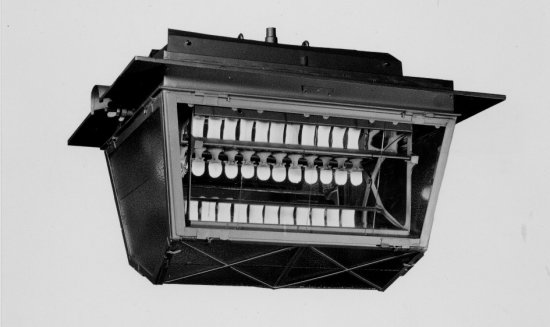
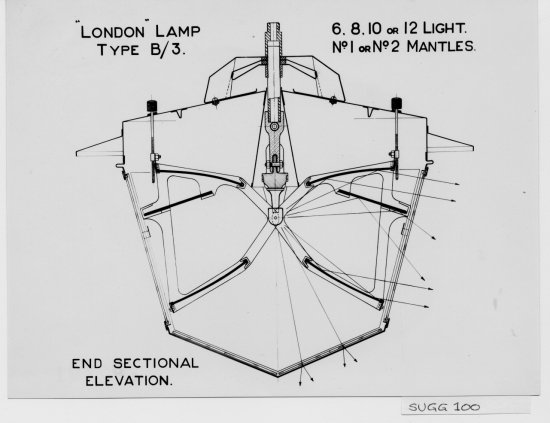
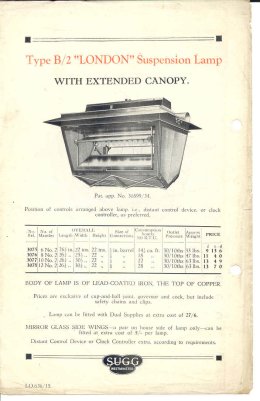
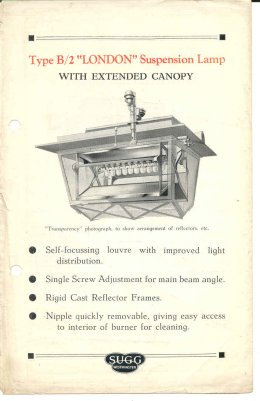
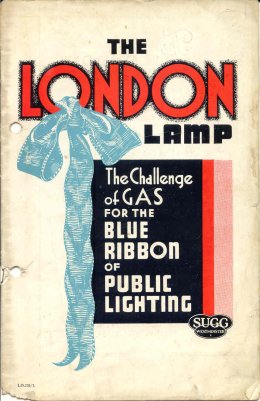
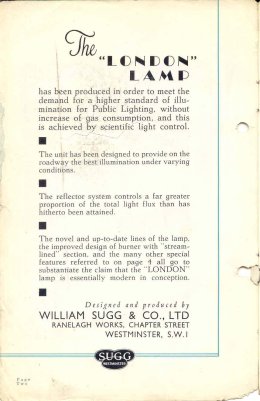
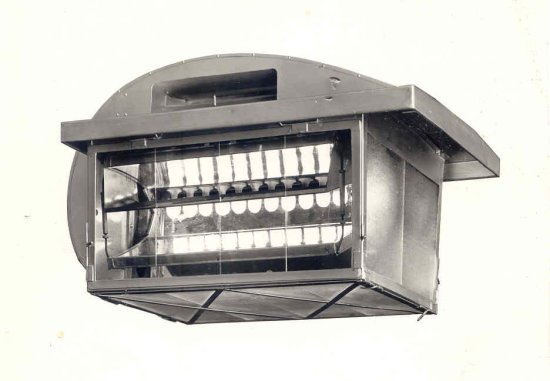
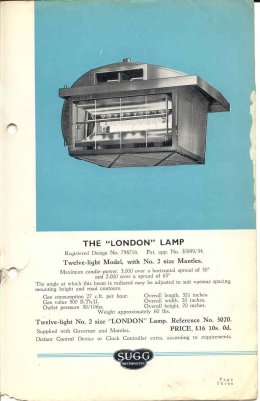
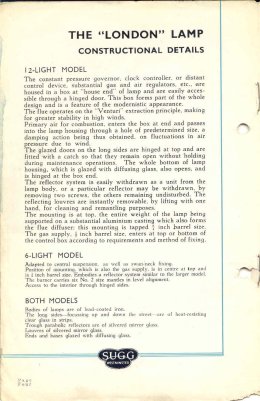
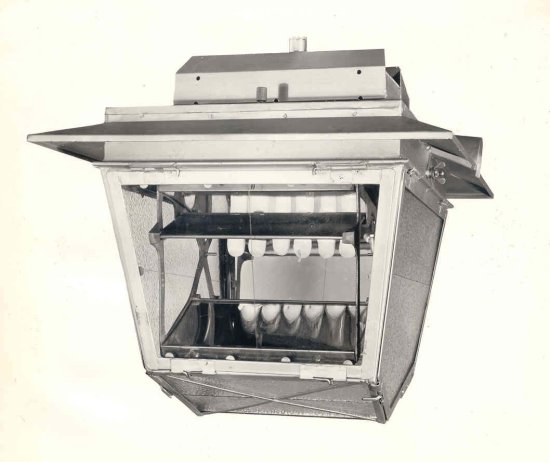
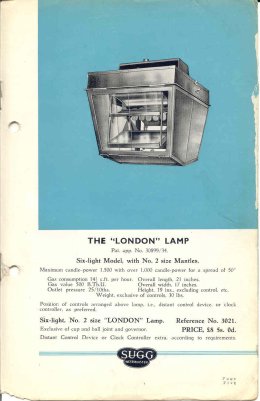
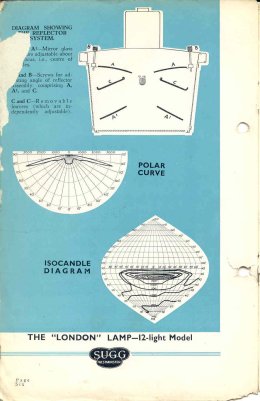
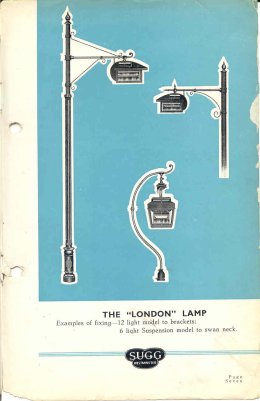
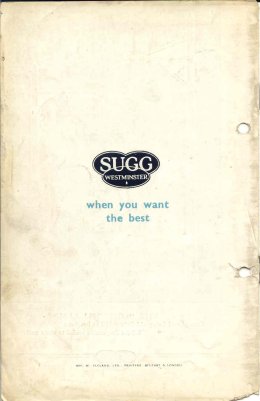
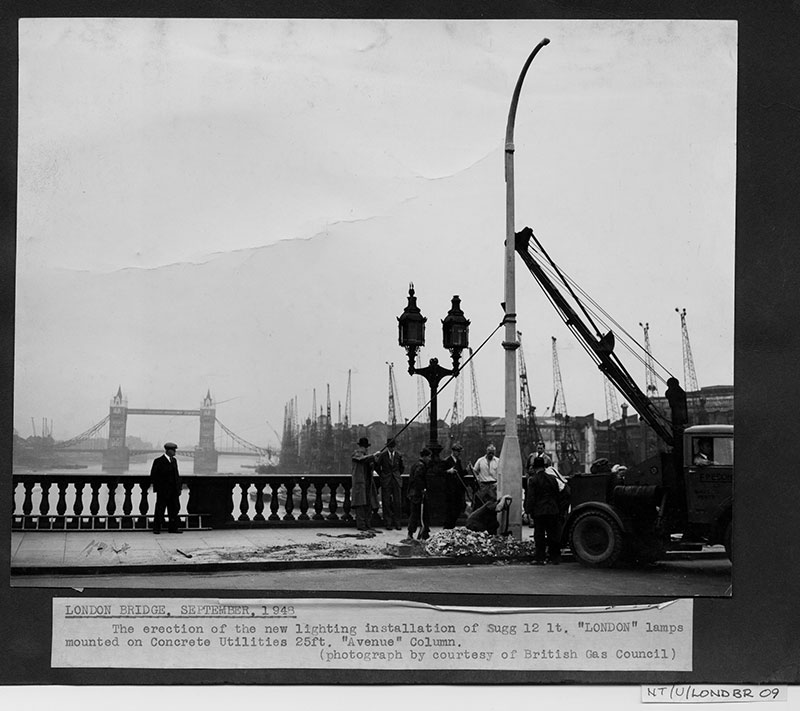
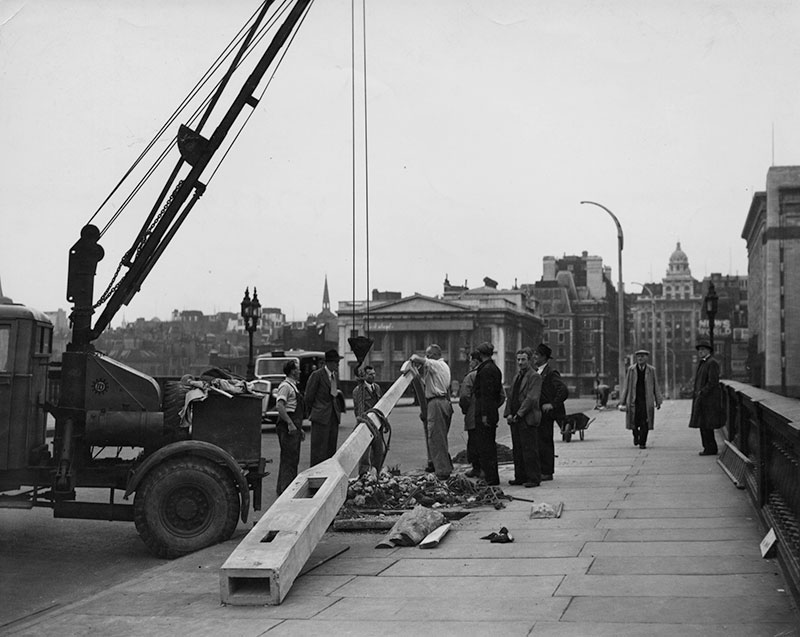
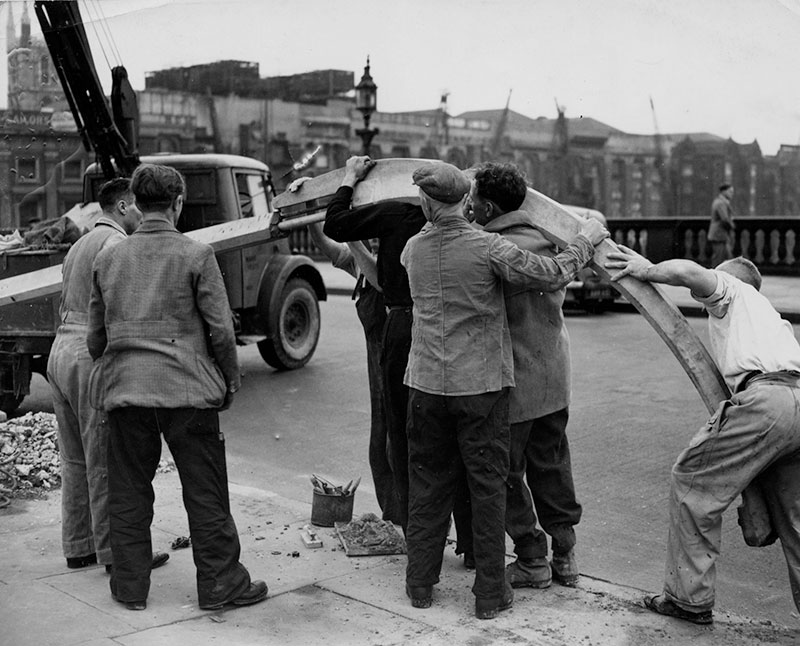
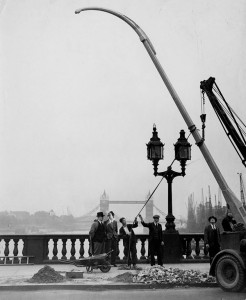
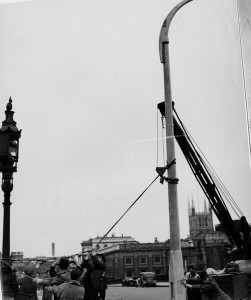
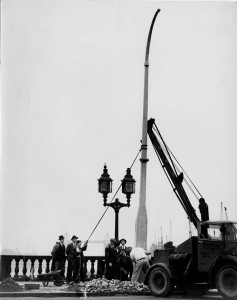
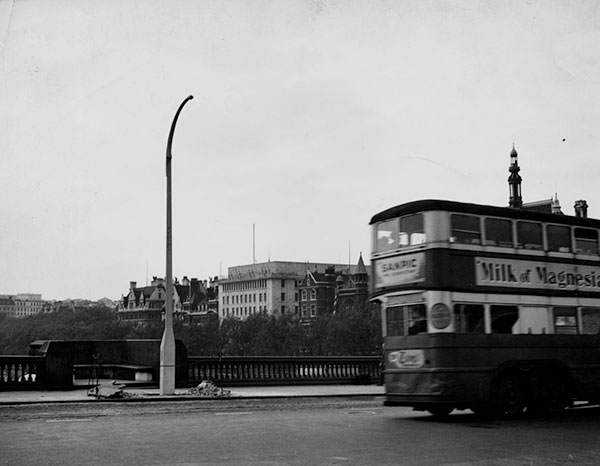
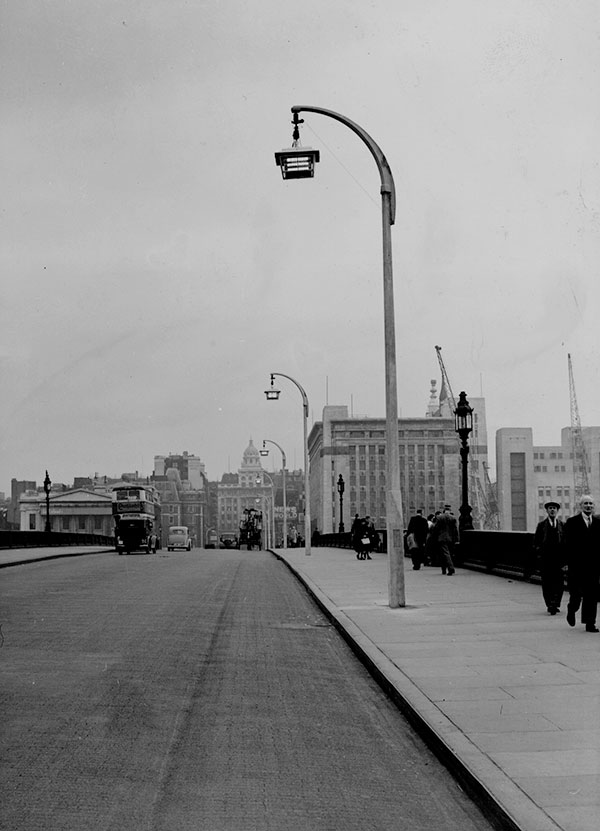
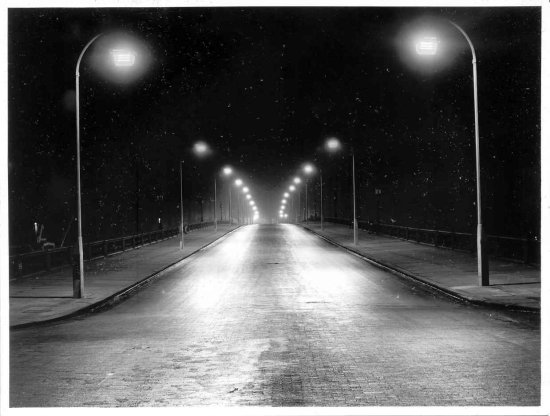
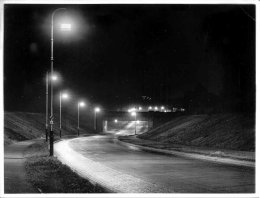

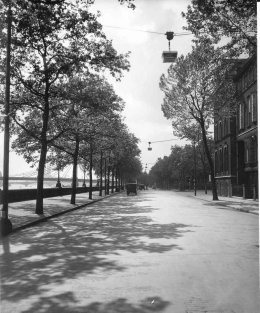
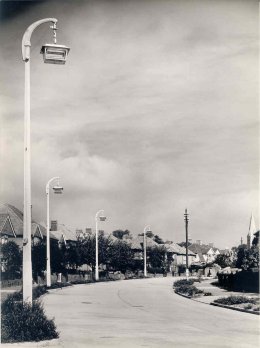
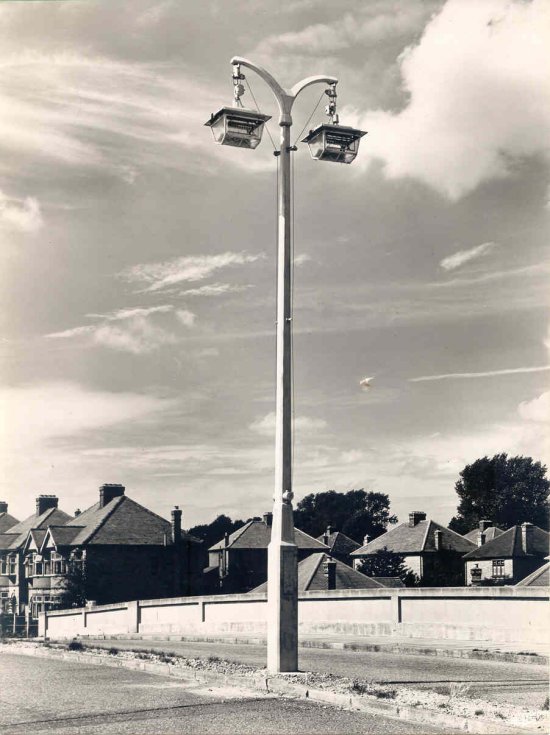
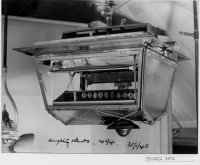
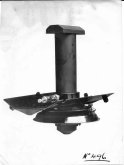
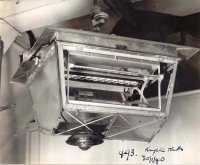
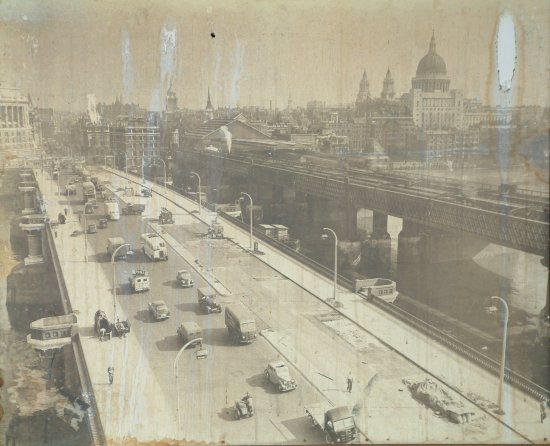
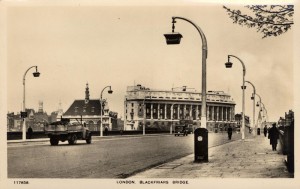
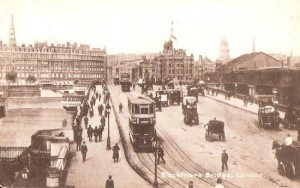
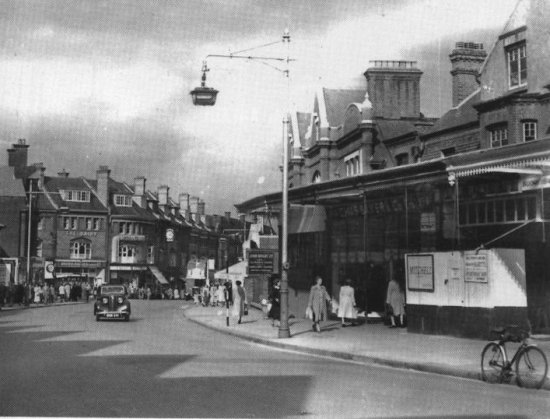
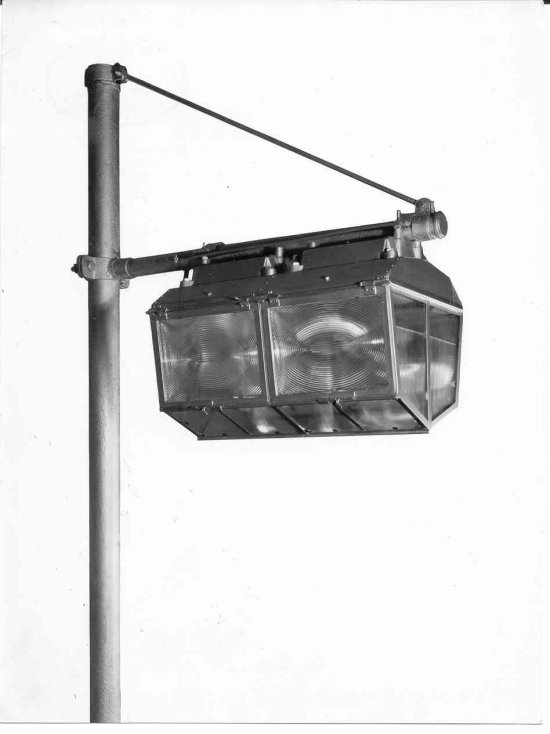
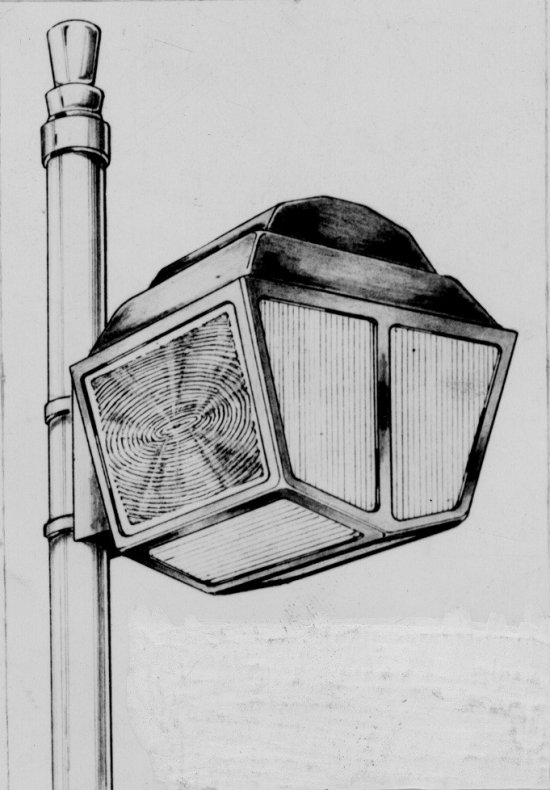
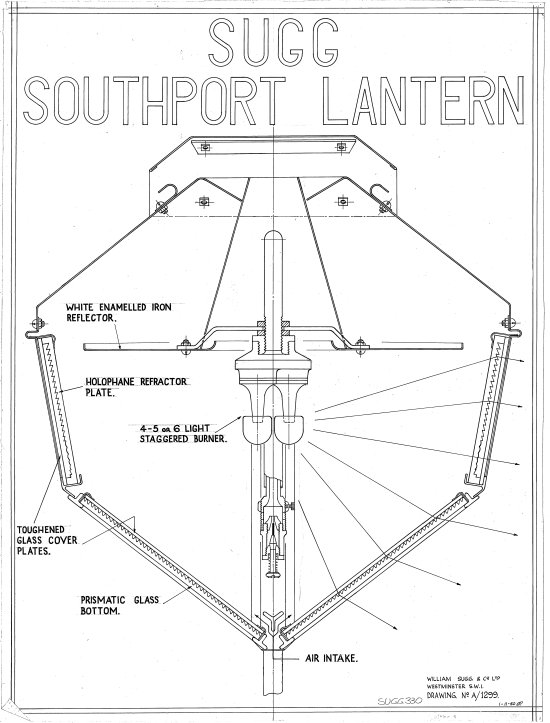
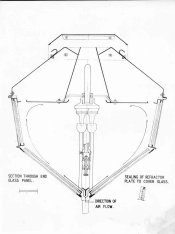
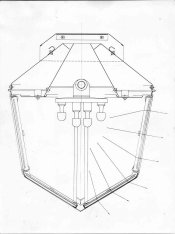
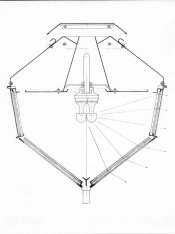
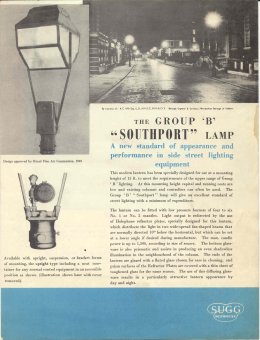
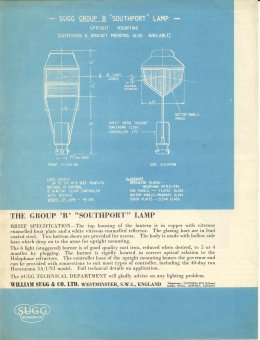
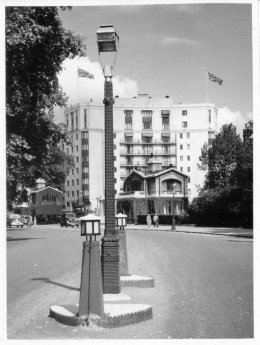
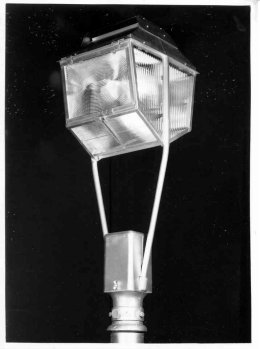
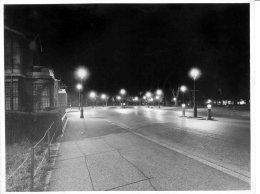
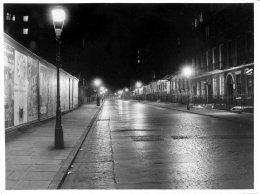
9 responses
Hello. On your London Lamps page, the photo captioned “Station Road, South Harrow” is actually just Harrow, or Harrow-on-the-Hill as the station is called. South Harrow is a separate part of the borough of Harrow. As far as I know, there is no Station Rd. in South Harrow. 🙂
Ian, I stand corrected! Of course that was how it was sent to me but I am happy to correct it!
As a child, I can remember seeing the Sugg London lamps (mounted on CU Avenue concrete columns) on London Bridge. But there was something odd about them – one of them had been replaced with a Rochester lantern, which looked a bit out of place. I have seen a photograph which confirms my memory! This was in the early/mid 1950s so presumably the London lantern had gone out of production… do you know when it disappeared from Sugg’s catalogues?
That is an interesting question. My collection of literature gets thinner as gas lighting loses its grip and WW2 arrives. After the war my Father, Crawford Sugg returned to a depleted company that had spent the war years making armaments with no developments for the future. He was clearly very aware of this and started work on what was to become the Halcyon Warm Air appliances along with his much younger brother, Ray. Both of them were consummate practical engineers but there was also a gap in the sales department so Crawford was also given the task of Sales Director for a period and the literature that he produced is of a very distinct type replacing the earlier booklets crammed full of lamps and appliances with single and double A4 colourful leaflets with a distinctly technical bias!
Crawford had joined the Company not long before the war and had done a great deal of work on gas lighting and its performance, introducing a number of powerful lamps and the clever ‘mirror head’ piece of test equipment that allowed the performance of a gas lamp to be measured with a fixed photometer by rotating a ‘box’ with mirrors to direct the light from the gas burner to the photometer from any direction. The London Lamp literature illustrated still in the smaller booklet size but with much more colour indicates the reason for the development of more powerful lamps with the strap line on the cover “The challenge of gas for the blue ribbon of Public Lighting.” The installation on London Bridge is dated 1948 and several other major road lighting jobs are also illustrated all of which are post war.
The biggest problem with gas lighting versus electric lighting has always been the level of maintenance and by the time you have 12 to 16 mantles with all the air movement through the lamp you can see the basic problem – including the cost of a complex design.
The smaller but efficient Southport design utilising refracting panels, was one answer as was the use of refracting bowls. Unfortunately the work with Holophane, a German company, that manufactured the refracting panels, came to a complete stop with the advent of war which I suspect led to the work on the much smaller and cheaper but much more efficient 8000 Lamp that could replace the still enormous number of 4-sided street lamps such as the Windsor and the long lived Rochester & Littleton. The next time I get to the relevant catalogues I will see if there are any date clues. There was a great tendency to keep lamps in production for any order principally because they were very much hand made and quantity was not so relevant to price.
Historic England is always interested in protecting items of historic interest and have recently (2016) listed a number of lamp posts which should protect them into the future. Note that I say posts not lanterns. Often the posts are much older than the lanterns that will have been changed with the changes in technology so be careful what you fight for! If in doubt discuss it in more detail with someone knowledgeable.
Hi. Can you please tell me why the street lamp is called the ‘SOUTHPORT’ lamp – is there any connection with the Lancashire seaside resort?? Thank you
Geoff, many of the Sugg lamps were named after the first location where they were used. The Windsor lamp was first used in Windsor and a lamp modified specially for Blackfriars bridge was called the Blackfriars Lamp for example. I cannot be absolutely sure but it is very likely that the Southport lamp was named after that town. Chris
I love old uk street lights , I might be collecting old street light bulbs for making miniature street light poles of something I will be using for model railway or my lego city. The lights I am getting that will illuminate my city. As more I want to say. Is that when I 1st peeked on this image. I saw them glowing great in the day and night scenes. I think they 1st installed this overhanging street light pole to make it modern like I call it modern London and England. Today you might see it on anywhere.but they will be removed soon.
We have had several people over the years talk about making really good railway lights for model railways to scale of course and one who made 3D drawings for patterns.